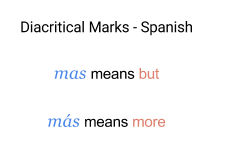A multilingual website is one that displays content in more than one language, for some pages or the entire site. It is imperative to ensure that your content is well-presented in all supported languages. Wrong font choices could result in reduced readability, bad layout and misaligned text. As a result, your site won’t provide satisfactory user experience to your multilingual audience and this will affect your international brand image.
Website Localization And Font Choices
If you are designing a multilingual website, there are several considerations to be mindful of for ensuring that your site adapts well to multiple languages. The process of adapting your site to another linguistic context is called website localization.
If you design your multilingual website with localization as a key criterion, your site will have a consistent look and feel. Your site content will look appealing to a diverse audience. One of the key considerations for smooth localization is your choice of fonts.
In this article, we will present best practices and tips for choosing multilingual fonts.
Choosing The Right Fonts For Multilingual Websites
You needn’t spend countless hours on localization issues if you consider few key criteria while selecting your fonts. Rather than just focusing on what suits your brand, find what suits multiple languages. Use the below tips when choosing fonts for your multilingual website, and you can be sure of a consistent look and feel.
1. Font That Supports All Your Target Languages
“Style” is never more important than “readability”. This design motto is even more important and relevant when creating a multilingual website. Select simple fonts that handle all characters of all possible target languages.
Pay attention to languages that use diacritical marks, Cyrillic characters, etc. Diacritical marks are used in certain languages to indicate pronunciation or sometimes a secondary meaning.
 Using a font that supports the special requirements of all your target languages is extremely important when you build a multilingual website.
Using a font that supports the special requirements of all your target languages is extremely important when you build a multilingual website.
2. Font Character Size/Width For Diverse Languages
A wide font may look good in English, but not very good in some other languages like German or Russian. Similarly, a tight font (like Impact font) might not be suitable for Asian languages and affect readability. Select fonts that accommodate the varying size/width requirements for different languages.

Consider character width of all your target languages to make sure that your font looks good on all your localized versions. Your translated text may expand or shrink, so keep this in mind and avoid wide fonts or tight fonts.
3. Font Styles For All Target Languages
Web designers use multiple font styles (italic, oblique, etc.) and font weights (bold, lighter, etc.) to present text beautifully. However, little do they realize that their chosen font may not support all different styles for all different languages.
For a multilingual website supporting CJK (Chinese, Japanese and Korean) languages, it is even more hard to find fonts. CJK languages have numerous characters. Also, the same character varies in shape across these languages. Not all fonts support all style options for all the different characters of these languages.

If you are targeting a global market, don’t consider CJK as just “three” languages. CJK readers embody almost one-quarter of the world’s population!
Consider using Google Noto fonts if you are targeting CJK languages. Google, in partnership with Adobe, has released a free font called “Noto Sans CJK.” This font covers Simplified Chinese, Traditional Chinese, Japanese, and Korean in a unified font family, and supports seven weights.
4. Using Unicode To Solve Font Problems
Unicode is the consortium that approves universal character encoding standards for different languages. It is a good practice to use Unicode if you are designing a multilingual website. So, make sure you select a font that supports Unicode character encoding and is fully Unicode-compliant.
You might be limited with font choices when you look for Unicode-compliance, but you’re going to find it easy when you localize your website. For more information about fonts supporting Unicode, refer to the Unicode Fonts resource library here.
Unicode-compliance alone does not work for all world languages. For example, until recently Unicode didn’t approve Tibetan. So if your multilingual website targets one such language, you have to take extra care in choosing your font.
5. Google Noto Fonts For Multilingual Website Design
Google introduced Google Noto fonts to provide pan-language harmony across the web. Noto supports 100 scripts ( in up to eight weights), 800 languages and 110, 000+ characters. Google developed this open source font system with the aim to provide a consistent user experience across borders and cultures.
Noto – stands for “No more tofu”. Tofu is the little rectangular box (⯐) that pops up in place of missing text. Google designers worked for years to come up with a set of fonts called “Noto” to banish “tofu” from the web and desktops.

Image Credit: Google
Multilingual website designers use Google Noto fonts, which address font problems that have been hindering them from creating stunning websites that look beautiful in all languages.
Need For A Multilingual Website And The Right Fonts
Are you designing a site that is available in just one language? If so, there could be just one reason for it: you are only interested in your local market. But if this is not the case in a globalized world, is there a need to design a multilingual site? Yes, and the reasons are many:
- You are creating a multilingual website that offers products or services to the global market
- Your site is primarily information based and you need to display content in different languages
- Your country has multiple official languages or has a diverse population speaking various languages
- You have legal obligations to present content in multiple languages, e.g. government institutions
- You are designing a multilingual website for a company with an international brand presence
A multilingual website designer should understand and appreciate the diversity of languages, not just when spoken but written too! A font that works well for one language may be a disaster in another language. Therefore, choice of fonts will affect your website localization and as a result, your global brand.
We hope that these useful tips will help you select the right fonts for multilingual website design. Multilingual websites not just help with your international brand presence but also help preserve the rich history and diversity of world languages.
Are you thinking about designing a multilingual website? Do you have an experience to share? Let us know in the comments sections below!






